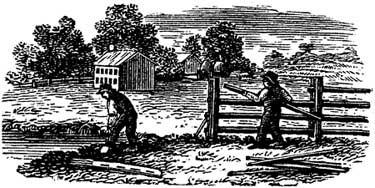|
|
Where the Birds Were: The Great Backyard Bird Count

Across North America, 42,000 intent watchers had binoculars and checklists ready. Most had bird books, too, to get it right for the February 15-18 Great Backyard Bird Count.
The Audubon Society and Cornell Lab of Ornithology’s Backyard Count intends to involve “citizen scientists” in birding and preserving habitats. This year’s feature was owls, in honor of Harry Potter’s great snowy Hedwig.
True to their name, the snow-colored owls stayed away from Maryland’s mild temperatures. However, 69 Hedwig lookalikes were spotted. North Dakotans caught sight of 10 snowys, while farther north in Manitoba, Canadians counted 21.
Closer to home, six rare barn owls were seen in the Baltimore suburb Whitehall. Three great horned owls were counted in North Beach, two in North East. Seven barred owls, four eastern screech owls and one short-eared owl complete the state owl count of 23.
In my backyard, not a single owl hooted. But 10-and-60 black birds scrabbled for seeds under the leafless silver maple. The 10 were sleek brown-headed cow birds. The 60, jaunty red-winged black birds. Ignored by all 70, one gray squirrel foraged for his share of seeds.
Four squirrels and 179 birds of 15 species came to my backyard during the brief four hours I kept vigil. A blue jay poked about in the hedge row. A mockingbird flitted through the trees. At the silver maple, the two blackbirds, nuthatch, junco, titmouse, mourning dove, house finch, Carolina chickadee, downy woodpeckers, cardinals, house sparrows, grackles and a single robin came and went.
A robin in February? Mine was one of 228 reports tallying 2,429 robins continent-wide. In fact, robins are found locally any time of year and, in proof, a flock of 50 visited my neighbor’s tall trees in December.
Robin’s reputation as a harbinger of spring is not, however, entirely misplaced. Information collected by the Count shows that American robins are most likely to be reported in areas with little or no snow. More than a dusting keeps the count low.
The data suggest a similar pattern for red-winged blackbirds, who also forage on the ground. My casual observations suggest that red-winged black birds and cow birds stay away from the backyard until the first snow flurry. Once seeds are hard to spot in their usual marshy habitat, they wing the short distance to Fairhaven Cliffs. Once they’ve made that first foray, they’re back in greater numbers until spring.
Observing birds and comparing data on-line led to other discoveries. Two downy woodpeckers, permanent neighborhood residents, showed up. Far away in the cold Yukon Territory of Canada, four downies were among 11 species sighted. Sixty-one Baltimore orioles were seen from Virginia to Florida, but only three in Maryland.
In addition to feeder birds, I logged 400 of 11 different water-loving species in our beach-front neighborhood: tundra swans, gulls, black ducks, mallards, vultures and more. I didn’t spot the bald eagles that Bay Weekly editor Sandra Martin and publisher Bill Lambrecht spied nesting in the tallest tulip poplar along Herring Bay. Their two were among 107 bald eagles spotted in the state. I did count 50 of the 181 American black ducks counted in Maryland. A bigger view comes from the Department of Natural Resources’ aerial count of waterfowl. Their black duck estimate totaled 22,400.
Our most numerous Maryland bird, at 43,504, was the common grackle, whose sleek black feathers shimmer iridescent. It was also first across the continent at 605,373. Second in both state and continent was Canada goose at 32,147 and 359,231. DNR estimated 426,900. Tundra swans had a surprisingly small Count showing at 1,118, but DNR’s count was 16,600. Fifty-nine of the large white birds were in my tally, 25 on the salt marsh and 34 on the Bay.
DNR had the numbers, but I had the pleasure of catching the swans, tail-up like fluffy white buoys.
The watch is officially over but the binoculars are staying by the window.
Learn more: www.birdsource.org.
—Sonia Linebaugh
 |
| Men of Courage: Darius Stanton, Carl Snowden, Dr. James Johnson, Rev. Leroy Bowman — as well as Mrs. Walter Mills for her late husband, Walter S. Mills — and John Chambers. |
Women of Color Honor Men of Courage
At this year’s annual Tribute to Women of Color, women made room for nine African American men rich in experience, wisdom, conviction and courage.
The Tribute is in its ninth year of awarding scholarships to achieving young women of color in Anne Arundel County, but this year marks the first awards for black men. Twenty-seven scholarships in the amount of $275,000 were awarded to Future Leaders at the March 2 luncheon at The Fontaine Bleu in Glen Burnie.
Nine Men of Courage were included this year, said publicist Carolyn Sullivan, “to recognize the overwhelming service and commitment these men have given to their communities.” Family, African American role models, faith, education and conviction, the men agreed, were the motive forces in their lives.
Gerald Stansbury, 50, is in his eighth year as president of the Anne Arundel County NAACP. He credits his civic-minded parents with setting him on the right track as a young man. He started by mentoring high school students. “But I wanted to do more,” said Stansbury. “I saw injustices.” He chose the NAACP as his place to accomplish more for the community. His advice: “You’ve got to be determined to set a goal and go after it. When obstacles come, be strong and keep your eye on the prize.”
Darius Stanton, executive director of the Boys and Girls Clubs of Greater Washington for the past seven years, gives credit to his family and to God for his desire to help others. “I am truly blessed by God to be able to do what I do,” said Stanton, whose grandfather joined sit-ins in Annapolis in the 1960s. Stanton’s advice to young blacks rests on a foundation of God and family. Then, he says, get a good education, take care of your health and well-being and develop entrepreneurial skills. Stanton’s own business, the Stanton Group, takes him across the country as a motivational speaker.
Dr. James Johnson, 54, says his desire to preserve the history of local African Americans is based on his roots in Annapolis, where he serves on the Board of the Banneker-Douglass Museum and Annapolis Youth Services. Johnson has been dean of engineering, architecture and computer sciences at Howard University for five years, and before which he was dean of civil engineering. He says his calling right now is to encourage youth, especially African Americans, to study math and science, whatever their career aspirations may be. To this end, he developed a web-based course in engineering for high school students. “Anything is achievable if you break it into small parts,” he says.
Carl Snowden quotes Dr. Martin Luther King Jr.: “The time to do right is always now.” To this he adds his own words of wisdom: “Have courage to listen to the inner voice.” Snowden, 40, is the intergovernmental relations officer for Anne Arundel County executive Janet Owens, a position he’s held for four years. He was a member of Annapolis City Council for 12 years. Snowden credits The Autobiography of Malcolm X as the catalyst for his lifetime devotion to civil rights. Involved in anti-war protests in the 1970s, he successfully sued the FBI for surveillance in federal district court.
John Chambers, 73, has lived a life of service to others. In 1968, he became alderman for the 7th District in Annapolis, where he served until 1981, when he was selected as the city’s first black mayor. Chambers counsels black youth to “get a good education, be active in all phases of life and be respectful to adults.”
The luncheon also gave tribute as a Man of Courage to Rev. Leroy Bowman, 92, Pastor of the First Baptist Church of Annapolis for the past 59 years.
Harry and Larry Reese were also honored, along with their father, William Reese II, who died February 22 at 79. The family has owned William Reese and Sons Mortuary, one of the oldest operating African American-owned businesses in Anne Arundel County, since 1950.
Two other men of courage were honored posthumously. Dr. Aris T. Allen, the first chief of medicine at Anne Arundel Medical Center, was honored for his career in medicine, politics, education and business. Walter S. Mills, principal for 46 years at what is now Walter S. Mills Parole Elementary School, received the honor for a lifetime promoting the welfare of others.
Five women of color received community awards. They are Sarian Bouma: Pathfinder Award; Dale Cager and Carla Flemings: Service to Youth Award; Bertina Nick: Good Samaritan Award; Malinda Wilson: Woman of Vision Sojourner-Douglass College Scholarship.
The Tribute — founded by the YWCA of Anne Arundel County and Anne Arundel County Racial Justice Committee — is co-sponsored by Anne Arundel Medical Center, Allfirst Bank, Nationwide Insurance and Sheehy Nissan of Annapolis.
—Martha Blume
Washington Bets $70 Million that Bay Farmers Know Best
 Where the farm meets the Bay, government knows best. Or so, for decades, federal and state officials have told farmers. Keep farm soil, animal wastes and agricultural chemicals from running into the Bay by planting buffers of trees and grasses, the bureaucrats said. Where the farm meets the Bay, government knows best. Or so, for decades, federal and state officials have told farmers. Keep farm soil, animal wastes and agricultural chemicals from running into the Bay by planting buffers of trees and grasses, the bureaucrats said.
And they put their money where their mouth was, so thousands of farmers implemented conservation practices — grumbling all the while that they knew better than the bureaucrats in Washington or Annapolis how to manage their land to help the Bay.
Now, farmers may get a chance to prove they were right.
In Washington, the $170-billion Senate Farm Bill nearing passage by Congress creates a new five-year, $70-million Chesapeake Bay nutrient reduction program. The new Bay program, conceived by local soil scientists and the Chesapeake Bay Foundation and championed by three Marylanders — Rep. Wayne Gilchrest and senators Paul Sarbanes and Barbara Mikulski — would pay farmers based on their performance: The more they reduce the nutrients found in runoff, the more money they get. How to reduce the nutrients in farmland runoff is up to the farmer.
Scientists have long known that farmers consistently apply more fertilizer than recommended as a relatively inexpensive insurance policy against bad weather. They also also know that the amount of fertilizer sprayed on corn and soybean fields could be cut without cutting back crop yields.
“The research shows that reducing application levels slightly below recommended rates will result in huge reductions in nitrogen loss but with little or no loss of yield,” said Tom Simpson, a soil scientist who is coordinator of Chesapeake Bay Programs at the University of Maryland.
On the Bay side of the ledger, reducing fertilizer could cut 30 to 35 percent of nitrogen run-off.
So Simpson and other soil scientists proposed a Bay-friendly solution: Pay farmers an incentive to use less fertilizer and provide insurance against any loss to yield.
“We imagined creating a program that would provide an incentive to try something new and a backstop against yield losses,” Simpson said.
That idea was the foundation for the nutrient reduction program in the Senate Farm Bill. Exactly how it would work would still be spelled out by federal officials in Washington, but it’s aleady being hailed as a needed new approach where farmland meets water.
“This program fills an important gap in conservation programs run by state and federal agencies,” said Bill Street of the Chesapeake Bay Foundation. “Some programs pay to retire farmland; other programs pay for farm infrastructure. But this program will provide, for the first time, incentives for better management of nutrients on active farmland.”
The Bay program could ultimately become a model for polluted run-off efforts across the country.
That would be just fine with most legislators, including many Republicans who pushed for performance-based conservation programs during the Farm Bill debate.
But some Republicans in the House of Representatives are aiming to shoot down the pilot program. Some oppose “regional” conservation programs, and some would rather use those funds to subsidize feed grains, rice and cotton.
Whether the program will survive negotiations between the House and Senate will not be known until April. The Bush Administration — which has consistently supported greater conservation funding in the Farm Bill but has not formally endorsed the new program — could be a deciding force in the debate.
—Scott Faber, Environmental Defense, Washington, D.C.
In Fiery Exit, EPA Veteran Cites Bay Damage
As a top Environmental Protection Agency official in Washington, Eric Schaeffer had the task of forcing aging power plants to stop fouling the air so badly.
One of his main goals as chief of the EPA enforcement office was prodding, suing or otherwise forcing the old coal-fired power plants in the Midwest to install pollution control equipment required by the revised Clean
Air Act of the 1990s.
As the new century dawned, the EPA was close to that goal for many of those plants. But after failing to get support from the Bush administration in his task, Schaeffer, 47, a 12-year EPA veteran, resigned in frustration last week, charging that the government was “about to snatch defeat from the jaws of victory.”
In an angry letter to EPA administrator Christine Todd Whitman, Schaeffer said that air pollution was responsible for 10,800 premature deaths in the United States each year and thousands of cases of chronic bronchitis and other illnesses.
“Add to that severe damage to our natural resources, as acid rain attacks soils and plants and deposits nitrogen in the Chesapeake Bay and other critical bodies of water,” he wrote in a letter obtained by Bay Weekly.
EPA officials disputed Schaeffer’s assertions, arguing that the agency is continuing a review of enforcement alternatives that began last May.
—Bay Weekly
Way Downstream …
In Virginia, citizens and public officials met last week to plan a memorial that recognizes fishermen lost at sea. The $80,000 bronze statue, which will be located at the Oyster, Va., harbor, has been the goal of Rita Hutton since her son, James Michael, disappeared while fishing nine years ago …
In Canada, Alberta Premier Ralph Klein is no fan of the Kyoto Protocol to reduce greenhouse gasses. “Well, Jesus, you know. I mean, quit breathing,” he said, according to the Toronto Globe and Mail. “If all of us quit breathing, can you imagine how much carbon dioxide we could avoid sending into the atmosphere?” Riled conservationists suggested he might lead by example …
 Our Creature Feature comes from Virginia and West Virginia, where peregrine falcons released with transmitters are sending back tales of adventure — and tragedy. Eight of the 19 released nine months ago are dead, and some of the other transmitters fitted by researchers in the FalconTrak program aren’t working. Our Creature Feature comes from Virginia and West Virginia, where peregrine falcons released with transmitters are sending back tales of adventure — and tragedy. Eight of the 19 released nine months ago are dead, and some of the other transmitters fitted by researchers in the FalconTrak program aren’t working.
But one bird flew to the Bahamas, then to Cuba and the Dominican Republic. Another winged north to oston and then down to Tampa.
“They can fly out 200 or 300 miles and fly exactly back to the same place, like nothing,” Bryan Watts, director of the College of William and Mary’s Center for Conservation Biology, told the Richmond Times-Dispatch.
Copyright 2002
Bay Weekly
|